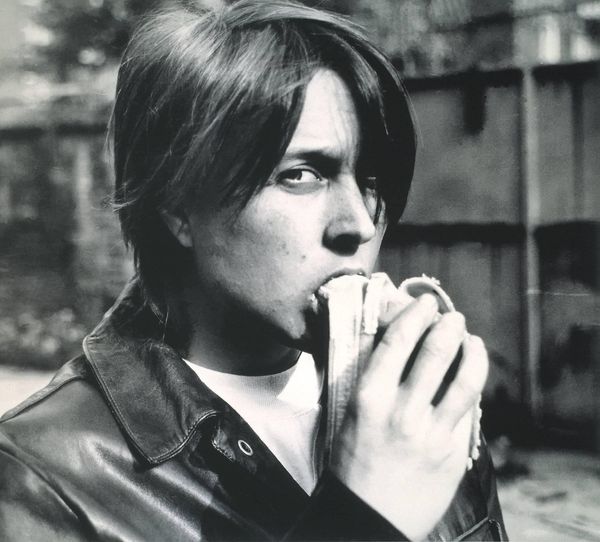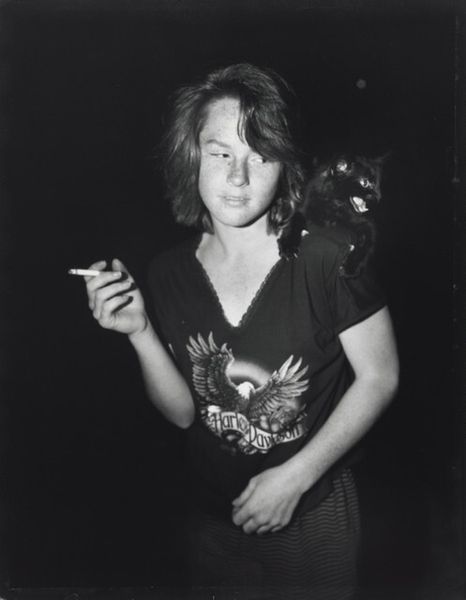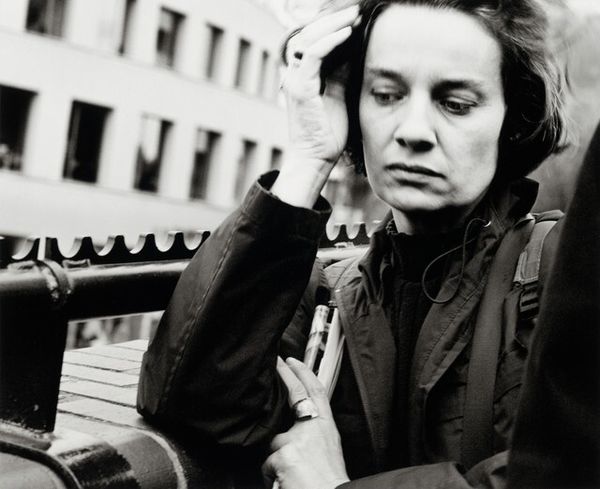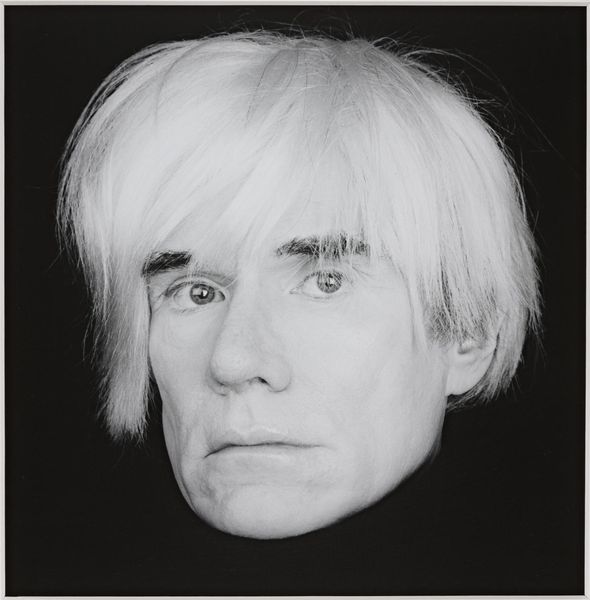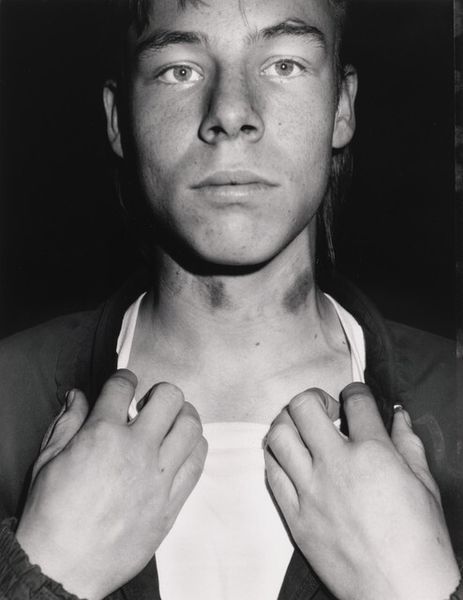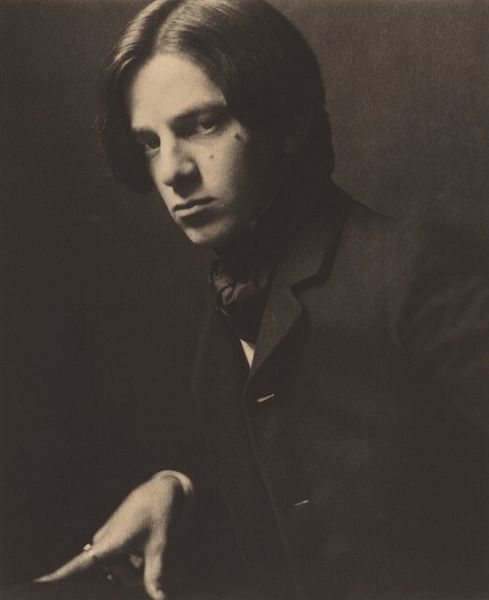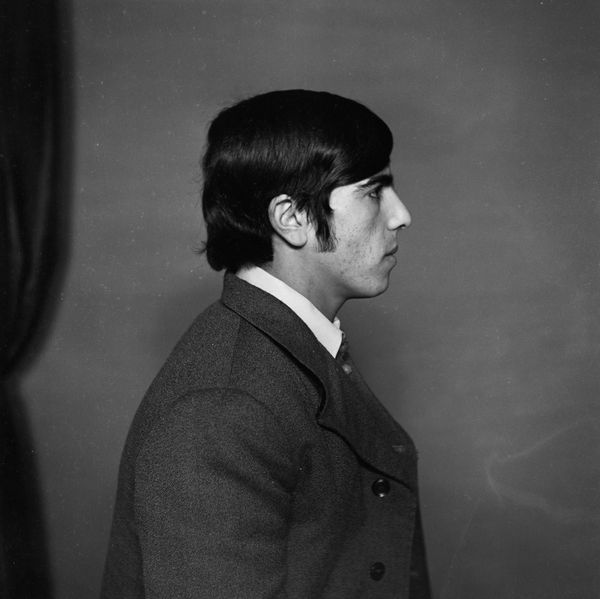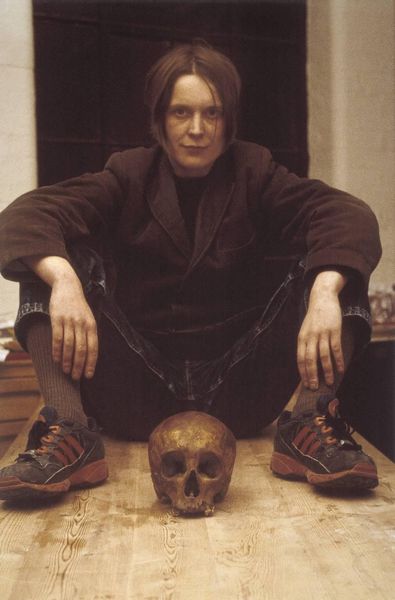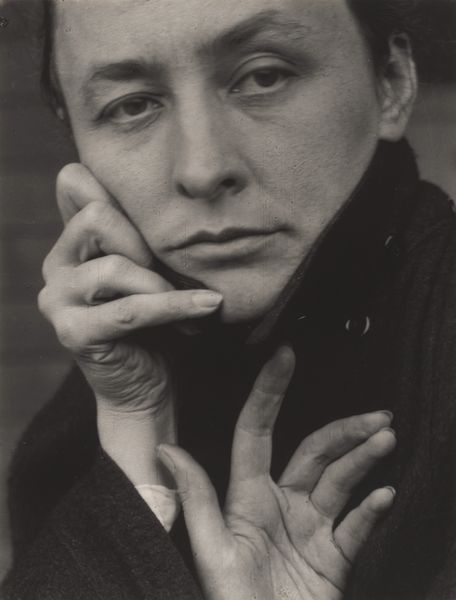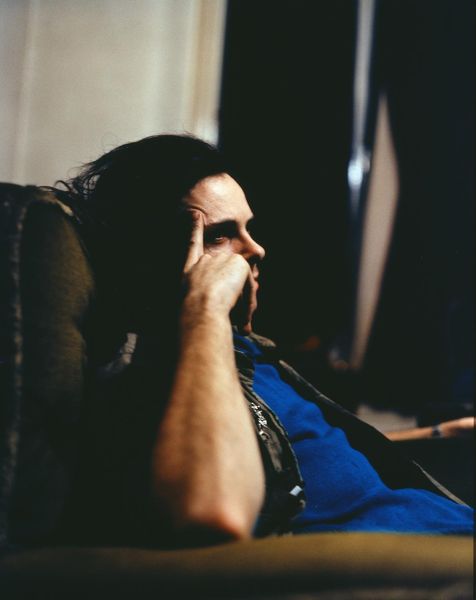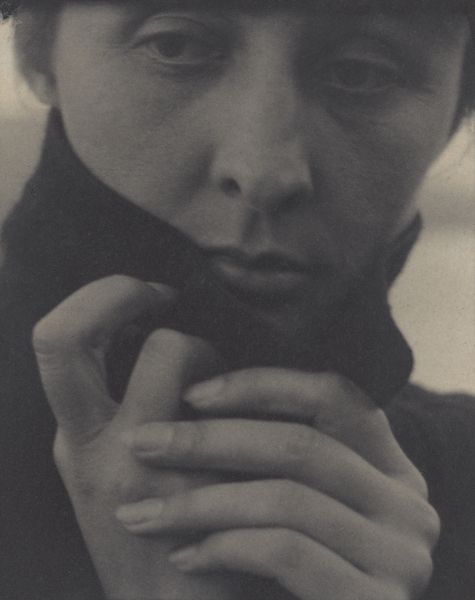
Dimensions: image: 730 x 510 mm support: 760 x 565 mm frame: 910 x 650 x 33 mm
Copyright: © Sarah Lucas | CC-BY-NC-ND 4.0 DEED, Photo: Tate
Editor: This is Sarah Lucas's "Fighting Fire with Fire". It's a black and white photograph, and the first thing that strikes me is the artist's direct gaze, almost confrontational. What do you see in this piece? Curator: The composition is strikingly direct. The starkness of the black and white emphasizes the play of light and shadow on the artist's face. Notice how the cigarette acts as a compositional element, a line drawing attention to the mouth. The overall texture is grainy, lending a certain rawness. Editor: Rawness, yes, like it hasn't been retouched. The cigarette feels so central. Curator: Indeed. Semiotically, the cigarette becomes a loaded signifier – rebellion, defiance, perhaps even a self-destructive urge, rendered visible through form and texture. Editor: I never considered the cigarette to be a signifier like that. Thank you! Curator: My pleasure. Focusing on the visual elements allows us deeper engagement with the artwork.
Comments
tate 7 months ago
⋮
http://www.tate.org.uk/art/artworks/lucas-fighting-fire-with-fire-p78449
Join the conversation
Join millions of artists and users on Artera today and experience the ultimate creative platform.
tate 7 months ago
⋮
Lucas's group of twelve photographic self portraits have been reproduced digitally as Iris prints in an edition of one hundred and fifty. They range from her first photographic self portrait, Eating a Banana 1990 (P78443) to the more recent Human Toilet Revisited 1998, which also exists in the Tate collection as a c-type print (Tate P78299). Photographic self portraits have been an important element of Lucas's work since the early 1990s. The seminal Eating a Banana changed Lucas's perception of her 'masculine' appearance from being a disadvantage to being something she could use in her art. 'I suddenly could see the strength of the masculinity about it - the usefulness of it to the subject struck me at that point, and since then I've used that' (Lucas quoted in Barber, p.16). The resulting confrontational self portrait photographs, made throughout the 1990s, complement her sculptural and installation work. Through them she presents an identity which challenges stereotypical representations of gender and sexuality. Posing simultaneously as tough and abject, macho but female, she creates an image of defiant femininity. Two of Lucas's early collages which post-date Eating a Banana, Divine 1991 (P78444) and Self Portrait with Mug of Tea 1993 (P78445), have been included in the group. In these two images, as in the later Self Portrait with Fried Eggs 1996 (P78447), Lucas appears in the macho pose she has claimed as her own. Clad in old jeans and heavy footwear, she sits with her legs wide apart and her feet planted firmly on the ground. Androgynous t-shirts and leather jackets feature in many of the images. In Self Portrait with Knickers 1994 (P78446) she stands, hands on her hips, her dark-coloured 'hard-chick' clothing contrasting with the white underwear strung up on a washing line behind her. In all these images her gaze back at the viewer is direct and uncompromising. Food representing or standing in for sexual body parts is a common theme in Lucas's work, mainly employed to reveal and subvert degrading objectification of the body in vernacular language. Fried eggs feature as breasts in sculptural installations and cover Lucas's own breasts in her Self Portrait with Fried Eggs. In Got a Salmon On #3 1997 (P78451) Lucas stands outside a public toilet, a huge salmon resting from her shoulder to below her waist, a pun on the idea of a female erection. Summer 1998 (P78452) portrays Lucas grimacing as she is sprayed with frothing beer. Like Eating a Banana and Lucas's film, Sausage Film 1990 (Tate T07313), it satirises traditional female roles in pornography. These images present a female artist of masculine appearance as an object for male desire. Cigarettes have featured regularly in Lucas's work, as a rebel accessory, a phallic stand-in and a means for independence, for 'possessing time in a palpable way, stopping to pause and contemplate … It's really important to have areas of your life - whether it's walking into a pub or smoking - where you suddenly feel you've found your own time zone.' (Lucas quoted in Sarah Kent, 'Young at Art', Time Out, October 7-14 1998, pp.38-42, p.42.) Fighting Fire with Fire 1996 (P78449) is a moody close-up depicting Lucas frowning with a fag between her lips. Smoking 1998 (P78453) is a more meditative image of the artist exhaling smoke as she lies, looking into the distance. The mood of Smoking is similar to that of the earlier image Human Toilet II 1996 (P78448) in which Lucas sits naked on the toilet bowl holding its cistern on her lap. As in Human Toilet Revisited 1996 (P78454) she has been photographed looking away from the camera and presents a more vulnerable aspect than in the confrontational poses of the earlier images. She appears caught unguarded in moments of quiet contemplation, perhaps closer to a meditation on the death drive which prevents people from giving up smoking despite its destructive effects on the body. Lucas is fascinated by the paradoxically co-existing drives towards both sex and death described by Sigmund Freud in his essay Beyond the Pleasure Principle (1920). She refers to this in Self Portrait with Skull 1997 (P78450), a photograph in which she sits on the floor with her legs apart and a skull positioned between her feet. Equating her sex with death, this image encapsulates the fear of obliteration, through a projected fantasy of engulfing and swallowing, evoked traditionally by the female body. For Lucas, as the female subject, this threat is posed by her own urges towards pleasure and self-destruction. Further reading:Pippa Coles, Matthew Higgs, Jacqui Poncelet, British Art Show 5, exhibition catalogue, South Bank Centre, London 2000, reproduced (colour) pp.88-9Lynn Barber, 'Drag Queen', Observer Magazine, London, 30 January 2000, pp.10-16Sarah Lucas, exhibition catalogue, Museum Boymans-van Beuningen, Rotterdam 1996 Elizabeth ManchesterDecember 2001
